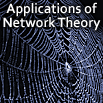Speaker
Dr
Sang Hoon Lee
(IceLab, Umeå University)
Description
During the last decade, network research has focused on the
global structural properties. Fewer studies take the local
perspective of agents traveling the network. In this talk I
will present a method that uses such a local perspective to
integrate topological and spatial properties. This approach,
we argue, will be even more important in this era of
GPS-equipped smartphones, which give users ability to access
local geometric information and navigate efficiently. We use
a simple greedy spatial navigation strategy as a probe to
explore spatial networks. These greedy navigators use
geometric information to guide their moves and have a memory
of their route in the network. We apply our method to
several real-world networks of roads and railways. The
results suggest that centrality measures have to be modified
to incorporate the navigators’ behavior. We also see that
removing some edges may actually enhance the routing
efficiency, which is reminiscent of Braess’s paradox (caused
by the conflict between user- and global optima).
Furthermore, we present the reverse problem of optimizing
the spatial layout of networks themselves to enhance the
performance of the greedy spatial navigation. We relate
these results, to the positioning of facilities and even
architectural design to facilitate the behavior of humans.

